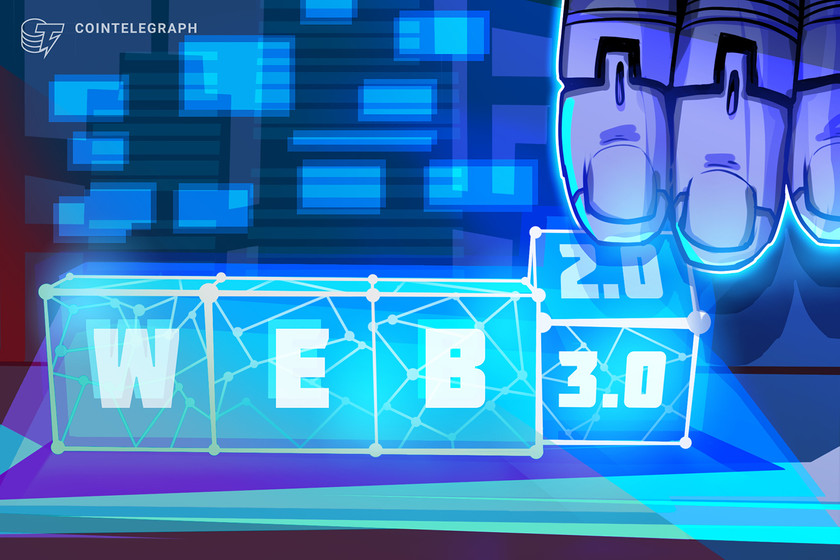
Can Web3 replace Web2… and what stands in the way of this happening? We look at some of the biggest challenges facing this burgeoning sector right now.
Web3 is the buzzword that's on everyone's lips — but when you put the mania aside for a moment, there's a burning question that needs to be asked: Can these projects fully replace Web2… and what stands in the way of this happening?
The likes of Google and Facebook have made a killing during the Web2 era, amassing billions of dollars in profits and a profound influence over the shape of the internet. But their continued influence is far from guaranteed. The 30-year history of the web is littered with the collapses of once-indestructible companies… MySpace being a notable example.
Amid countless concerns over how the data of users is harvested and used, plus fears that content creators aren't being properly compensated for their hard work, Web3 is positioning itself as a democratizing force that puts power back in the hands of the public. Even the Web2 giants themselves see the potential of this new approach — it's been almost a year since Facebook changed its name to Meta and declared plans to focus on the Metaverse.
While the vision and ambition of Web3 startups is to be applauded, there are challenges that must be tackled. Critics rightly point to the vast energy consumption of some blockchains — especially those based on a Proof-of-Work consensus mechanism. They argue that creating a level playing field online can't be at the expense of the environment. And with a dizzying number of DeFi protocols and cross-chain bridges falling victim to eye-watering hacks, with billions of dollars lost, there are safety issues to take into account as well.
For Web3 projects to achieve their full potential, the infrastructure they rely on needs to have fully decentralized data management — and that means eliminating a reliance on centralized cloud providers such as Amazon Web Services. Owners need to be in the driving seat too, and blockchains have to be immutable, affordable and more eco aware. Ticking all of these factors is no mean feat.
Big ideas, worrying teething troubles
The Metaverse has been touted as a $1 trillion opportunity by JPMorgan — a silver bullet that could revitalize the music industry and reinvent the way we work and play. But before virtual worlds truly go mainstream, tricky security and privacy challenges must be overcome. A lack of interoperability risks standing in the way of adoption, too. And while the internet was pretty clunky in the early days, Metaverses have a long way to come before they're usable and intuitive. The aspiration of people using blockchain technology without even realizing is some way off yet.
And that brings us to some of the other use cases that have been proposed for blockchains. A number of entrepreneurs firmly believe these immutable ledgers could drag the healthcare sector into the 21st century — ensuring medical records are properly digitized and easily transferred between facilities. Here's the problem: this is an industry that has copious amounts of data, and patient confidentiality is sacrosanct. Big opportunities lie ahead for networks that can achieve interoperability, immutability, security, transaction transparency, and medical data sovereignty. Blockchain could also be nothing short of revolutionary if it tackles the sheer volume of fake medication that's in this space — with some estimates suggesting 10% of the drugs in circulation are counterfeit.
So… what's the answer?
Inery is a Layer 1 blockchain that aims to tackle some of these burning issues — seamlessly connecting systems, applications and a plethora of networks. Its database management solution, IneryDB, champions high throughput, low latency and complex query search — all while ensuring data assets remain fully controlled by their owners.
The team behind this Proof-of-Stake network say it's scalable, resistant to Sybil attacks, energy efficient, tamperproof and speedy — capable of achieving 5,000 transactions per second, with new blocks created every half a second. All of this is achieved without compromising on security.
Dr Naveen Singh, the CEO of Inery, told Cointelegraph: "With Inery, our efforts are focused on envisioning a decentralized, secure and environmentally sustainable architecture for database management. Inery enables an affordable and scalable solution that allows people to issue and control data assets to activate a new paradigm for data accessibility."
Inery says it's already achieved a number of big milestones, and has been listed on Huobi. The network's testnet has now been launched, and it has secured a $50 million investment commitment from GEM — as well as other contributions from the likes of Metavest and Truth Ventures. It's also attracted some big-name talent. The founder of Orange Telecom now serves as chairman, and the ex-VP of global marketing at Apple is joining as a principal advisor.
Looking ahead, the project wants to enter into strategic partnerships that will unlock compelling use cases for its systems in more industries. It's hoped that the mainnet will launch in the first quarter of 2023 — paving the way for developers and users alike to properly discover what the future of Web3 should look like.
Disclaimer. Cointelegraph does not endorse any content or product on this page. While we aim at providing you with all important information that we could obtain, readers should do their own research before taking any actions related to the company and carry full responsibility for their decisions, nor can this article be considered as investment advice.








